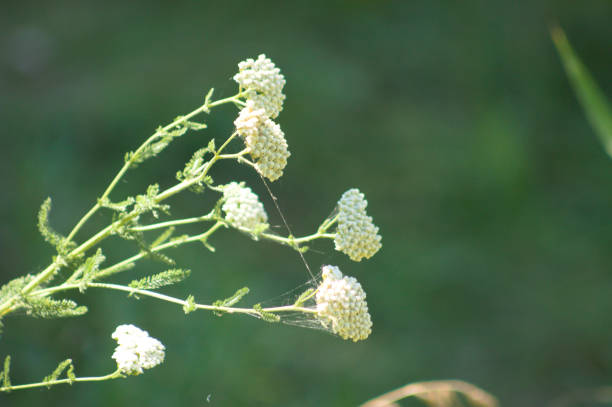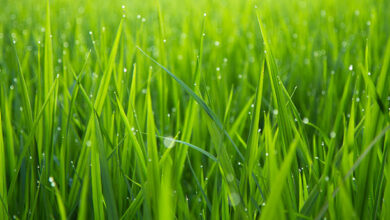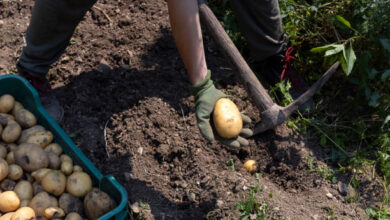
Yarrow Seeds: Everything You Need To Know
Yarrow is a versatile and hardy herb renowned for its vibrant blooms and diverse uses. Whether you’re looking to enhance your garden with a splash of color or reap the benefits of this medicinal plant, growing yarrow from seeds is a rewarding endeavor. This comprehensive guide will walk you through everything you need to know about planting, caring for, and benefiting from yarrow seeds.
What Are Yarrow Seeds and Why Grow Them?
Characteristics of Yarrow Seeds: Yarrow seeds are small, usually brown or black, and have a high germination rate. These seeds are resilient, capable of sprouting even in less-than-ideal conditions, which makes them perfect for various gardening situations.
Benefits of Growing Yarrow: Incorporating yarrow into your garden offers several advantages:
– Ornamental Value: Yarrow’s vibrant flowers come in colors ranging from white and yellow to pink and red, adding beauty and diversity to your garden.
– Medicinal Uses: Traditionally, yarrow has been used for its anti-inflammatory and astringent properties. It’s commonly utilized in herbal remedies to treat wounds and digestive issues.
– Pollinator Attraction: Yarrow attracts beneficial insects such as bees and butterflies, supporting local ecosystems and promoting garden biodiversity.
Yarrow Varieties: There are numerous yarrow varieties available from seeds. Popular options include:
– ‘Moonshine’: Known for its silver foliage and bright yellow blooms.
– ‘Red Beauty’: Features striking red flowers that stand out in any garden.
– ‘Summer Pastels’: Offers a mix of soft pastel colors for a more subtle garden palette.
How to Plant Yarrow Seeds for Optimal Growth
Best Time to Plant: Yarrow seeds are best sown in early spring or late summer. In cooler climates, spring planting ensures that plants establish before winter. In warmer areas, late summer sowing allows yarrow to establish roots before the heat of summer.
Soil Preparation: Yarrow thrives in well-drained soil with a pH between 6.0 and 7.0. Prepare the soil by:
– Testing Soil pH: Adjust the pH if necessary using lime (to raise) or sulfur (to lower).
– Improving Soil Structure: Incorporate organic matter such as compost to enhance soil fertility and drainage.
Planting Instructions:
– Sow Seeds: Scatter yarrow seeds evenly over the soil surface. Lightly press them in, as they need light to germinate.
– Seed Depth: Cover seeds with a thin layer of soil, approximately 1/8 inch deep.
– Spacing: Space seeds about 12 to 18 inches apart to allow for their spreading growth habit.
– Watering: Water gently to ensure good seed-to-soil contact. Keep the soil moist but not waterlogged until germination, which typically occurs within 7 to 14 days.
Container vs. Garden Planting: Yarrow can be grown in containers or directly in garden beds. For containers, choose large pots with drainage holes and use a high-quality potting mix. In garden beds, select a spot with full sun to partial shade.
YOU MAY LOVE TO READ
Peppermint Seeds: A Comprehensive Guide
Virginia Growing Zones: A Comprehensive Guide for Gardeners
Mint Seeds: Everything You Have To Know
Essential Care Tips for Healthy Yarrow Growth
Watering Requirements: Yarrow is relatively drought-tolerant once established but benefits from regular watering, especially during dry spells. Water deeply once a week, allowing the soil to dry out between watering.
Fertilization: Yarrow generally requires minimal fertilization. An application of a balanced, all-purpose fertilizer in the spring can promote robust growth. Avoid excessive fertilization, which can lead to overly lush foliage at the expense of flowers.
Light and Temperature: Yarrow thrives in full sun but can tolerate partial shade. It prefers temperatures ranging from 60°F to 75°F (15°C to 24°C). In colder climates, provide some winter protection with mulch or row covers.
Maintenance Practices:
– Pruning: Deadhead spent flowers to encourage continuous blooming and prevent the plant from becoming leggy.
– Dividing: Every 2-3 years, divide yarrow plants to prevent overcrowding and promote healthy growth.
Troubleshooting Yarrow Plant Problems
Pests and Diseases:
– Pests: Yarrow is generally pest-resistant but can occasionally attract aphids or spider mites. Use insecticidal soap or neem oil to manage infestations.
– Diseases: Common issues include powdery mildew and rust. Ensure good air circulation around plants and avoid overhead watering to minimize disease risk.
Growth Challenges:
– Poor Flowering: Ensure plants receive adequate sunlight and avoid excessive fertilization, which can lead to more foliage than flowers.
– Leggy Plants: Prune back yarrow to encourage a bushier growth habit and more compact form.
Environmental Factors:
– Drought: While drought-tolerant, yarrow still benefits from regular watering during extended dry periods.
– Soil Conditions: Ensure good drainage to prevent root rot and other soil-borne issues.
Why Yarrow is a Valuable Addition to Your Garden
Ornamental Value: With its diverse color range and attractive foliage, yarrow adds beauty to any garden setting. Its long-lasting blooms make it a standout plant in flower beds and borders.
Medicinal Uses: Yarrow has a long history of use in traditional medicine for its therapeutic properties. It can be used to make herbal teas, tinctures, and salves for various ailments.
Pollinator Attraction: Yarrow is a great plant for attracting beneficial insects, enhancing the health of your garden by supporting pollinator populations and contributing to a balanced ecosystem.
Conclusion
Growing yarrow from seeds is a rewarding way to enhance your garden with a plant that offers beauty, medicinal benefits, and ecological value. By following these planting and care tips, you can successfully cultivate yarrow and enjoy its numerous advantages throughout the growing season.




